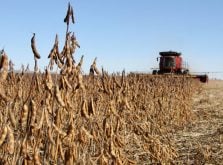The past couple of years have been frustrating for promoters of Canadian winter wheat.
Two consecutive soggy springs have demonstrated to farmers the value of seeding a portion of their crop in the fall.
However, late harvests haven’t left farmers enough time for fall seeding, and wet Septembers haven’t helped matters.
“We couldn’t likely have had two less co-operative years than the past two,” said Paul Thoroughgood, regional agrologist for Ducks Unlimited Canada. “Mother Nature certainly conspired against us.”
Read Also

Manitoba extends Crown land rent freeze
Manitoba government links the continued rental rate freeze on grazing and forage leases to economic and environmental challenges facing the industry
Statistics Canada says farmers seeded 600,000 acres of winter wheat in Western Canada in 2011, which is the same amount as last year. That’s a far cry from the previous three-year average of 1.1 million acres.
Thoroughgood said that’s a shame because the wet conditions in May and June that made spring seeding difficult are ideal for winter wheat, which is tillering and heading at that time.
He said he noticed heightened interest in the crop while working at the Ducks Unlimited trade show booth at the Farm Progress Show last June.
“Our booth was just swamped with people wanting to know about good agronomy practices for planting on those drowned out acres,” he said.
Farmers were concerned that they wouldn’t get a crop in the ground next spring and knew how well the 2010 winter wheat crop had performed.
However, when he followed up with those growers in the fall, Thoroughgood discovered they were unable to get the crop in the ground.
“That rain we had all through September, it just killed their intentions,” he said.
The crop that was planted is in good condition, although it is late maturing because of delayed fall seeding.
Thoroughgood said winter wheat can take a surprising amount of water and still recover in the spring as long as it is still dormant.
However, it has no more ability to withstand flooding than a spring wheat crop would in June once the crop begins to respire.
He warned growers to expect outbreaks of leaf spotting diseases in 2011 and to be on the lookout for grassy weeds, which could be a problem this year because of delayed crop maturity.
Thoroughgood is optimistic that winter wheat plantings will return to the million acre level this fall. Farmers should have plenty of unseeded acres and canola stubble to plant into and no shortage of winter wheat seed.
“I know several seed growers who had a fair inventory cleaned last fall and then had their customers back out on them,” he said.















